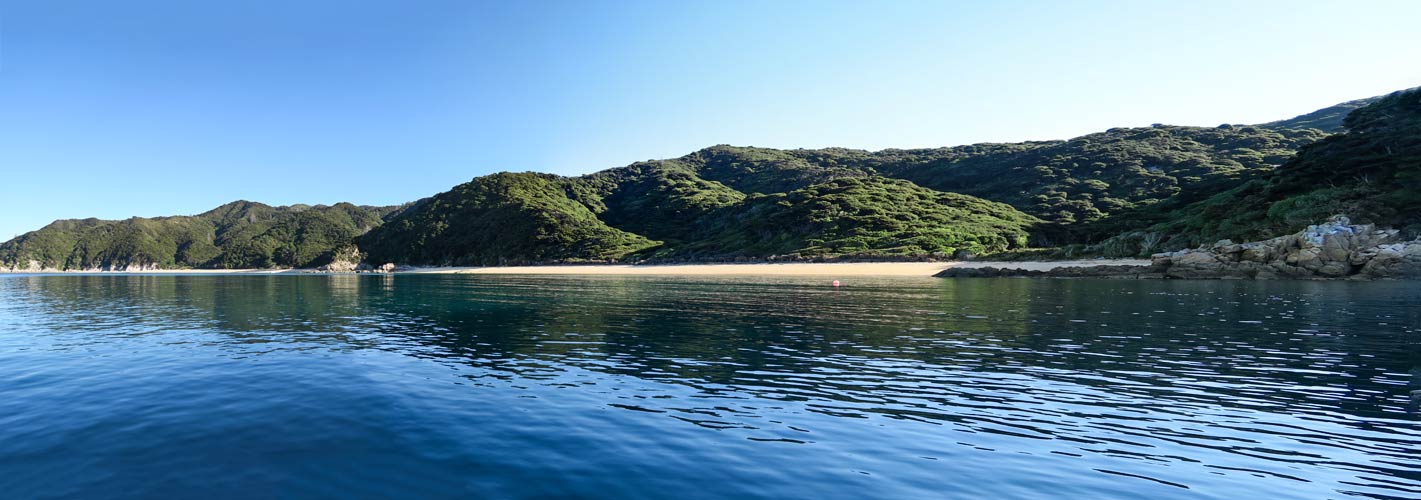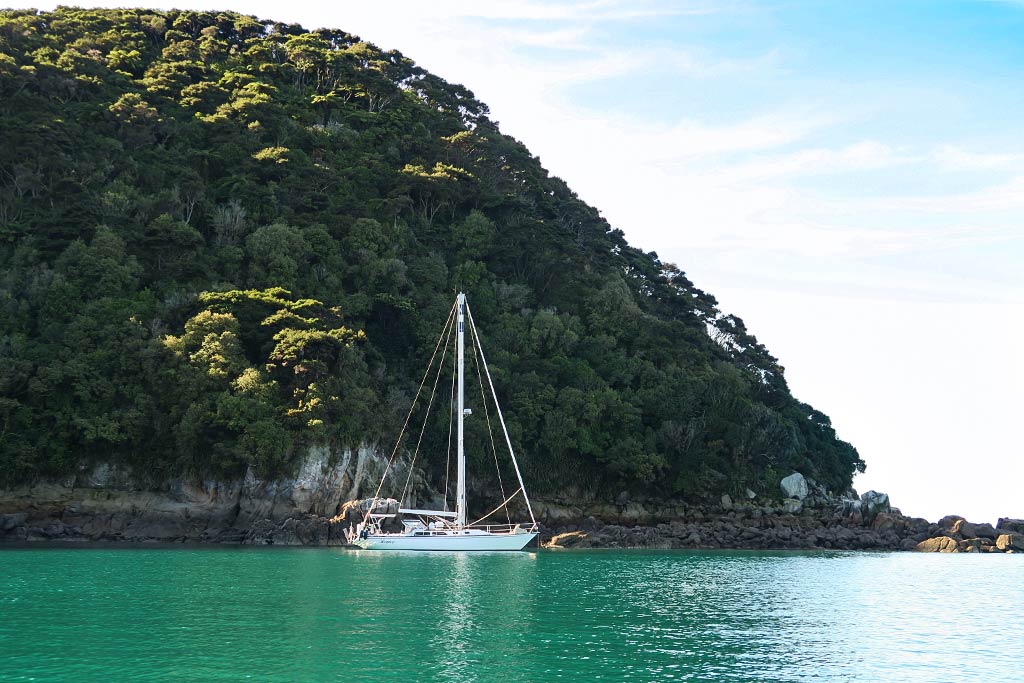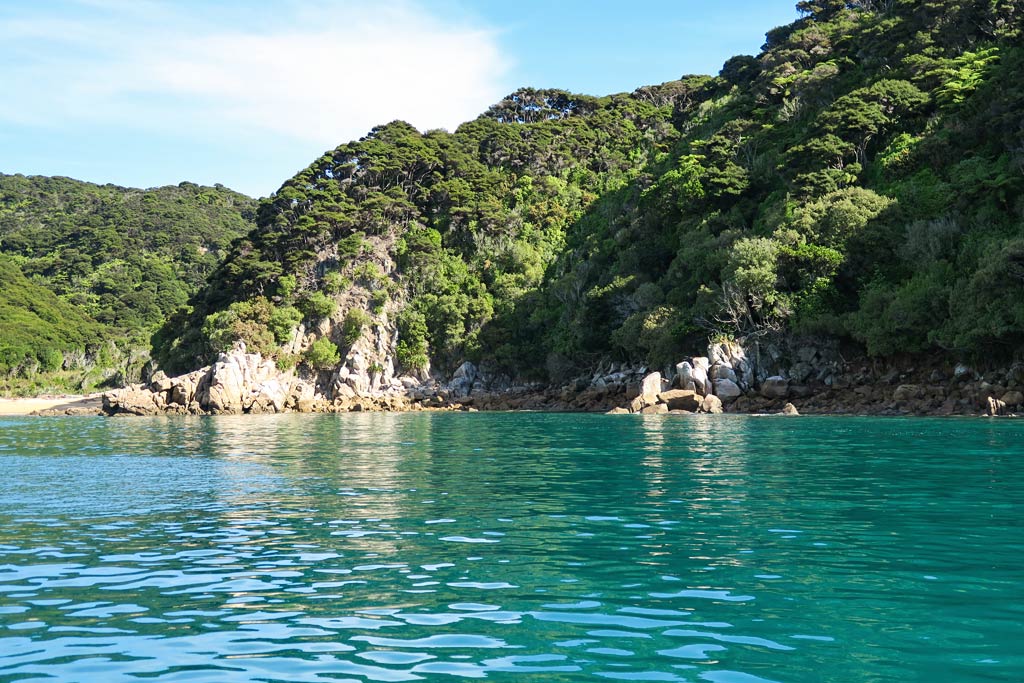April 20, 2016
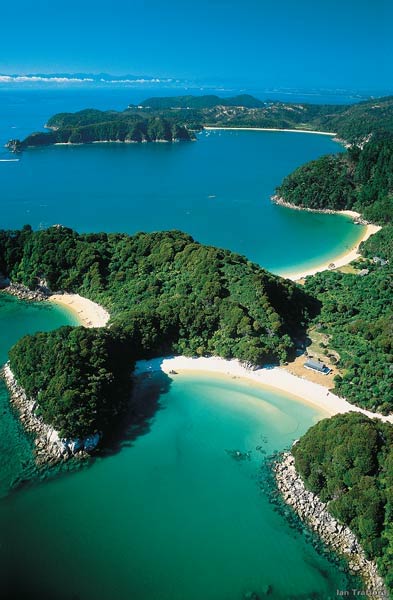
Our arrival in Tasman Bay marked our unofficial entry into Abel Tasman National Park.
Mutton Cove marks the north end of this famous coastline filled with miles of golden beaches, weather-carved sandstone headlands, quiet coves, and jungle-like river inlets. All this is backed by hills covered with native forest. Because the area is protected by various land masses, the beaches have no waves, giving it a peaceful, lake-like effect.
The interactive map below shows the Abel Tasman National Park’s coastline from it’s northernmost to southernmost points.
That’s not to say that weather isn’t a factor. It’s fairly mild, but morning northwesterlies generally switch to late-afternoon southeasterlies, which can make the anchorages choppy and uncomfortable if the breeze is strong. When an actual weather front comes along, boats need to be in a well-protected anchorage because the associated winds can get pretty strong.
Our strategy was to enjoy the several-day period of very light winds (enough so the evening breezes wouldn’t be an issue), and work our way south to a protected anchorage in time for a coming front.
We made our way into Mutton Cove, tucking in behind a small peninsula called Separation Point. This anchorage would give us dinghy access to three beautiful beaches: Mutton Cove, Anatakapau, and Anapai, and after several days on the boat we were anxious get out and do some walking!
Below, a few photos of our Mutton Cove anchorage. (Click to enlarge/scroll).
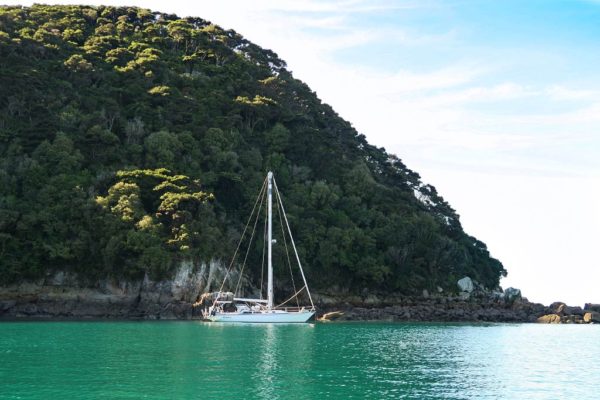
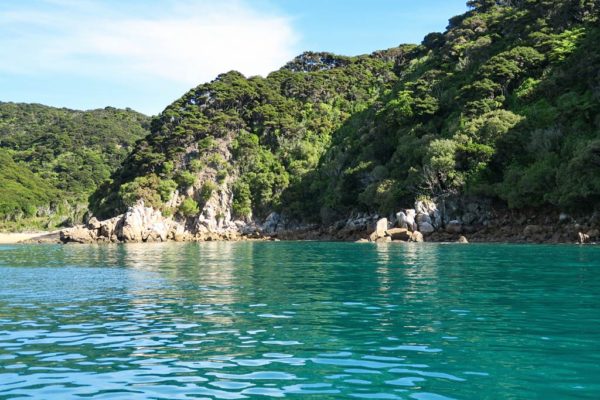
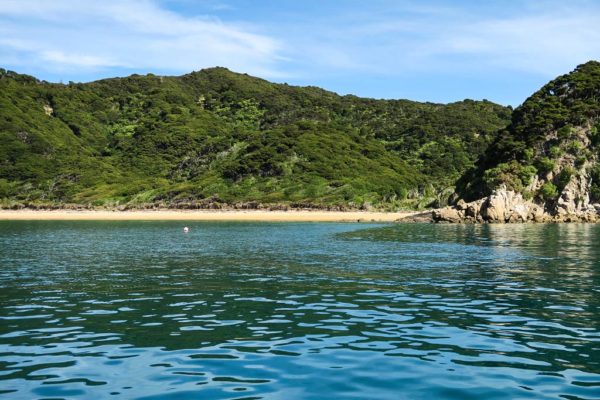
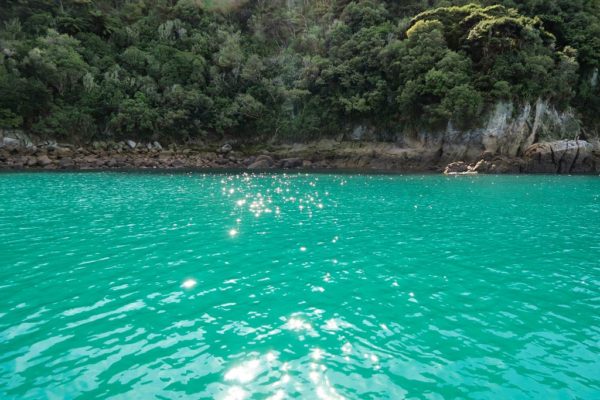
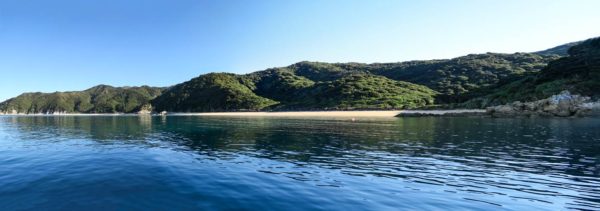
Incidentally, this area has a famous hiking trail: the Abel Tasman Coast Track. Like the Queen Charlotte Track (in the Marlborough Sounds), hikers can opt to do the entire 37-mile-long track over several days, or just do pieces of the track via water taxis and day hikes.
The other option is to do the coastline by kayak, stopping at whatever beach strikes your fancy. Kayakers see less of the forested trails, but some of the headlands and coves not accessible by trail are pretty spectacular. –Cyndi







